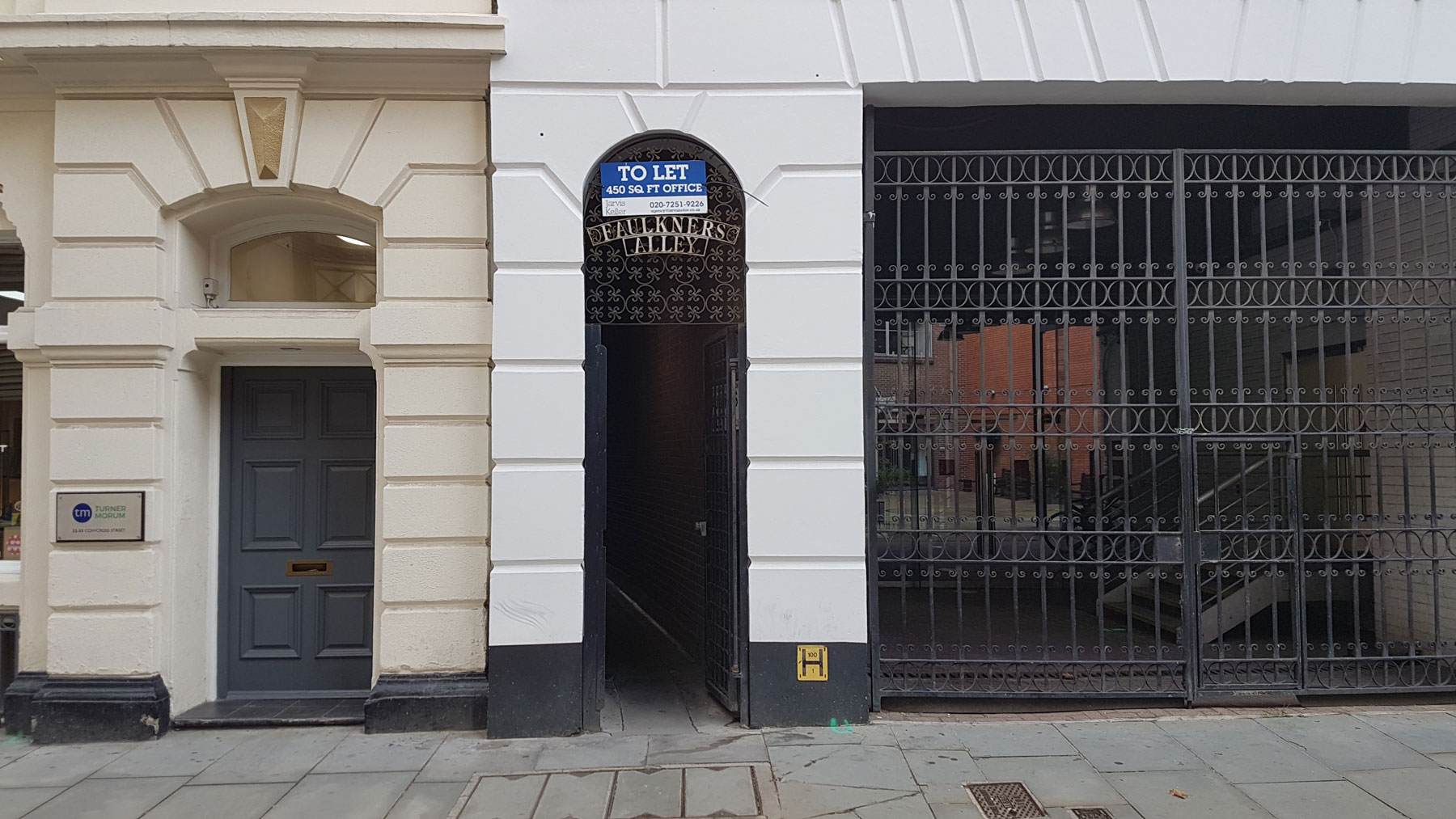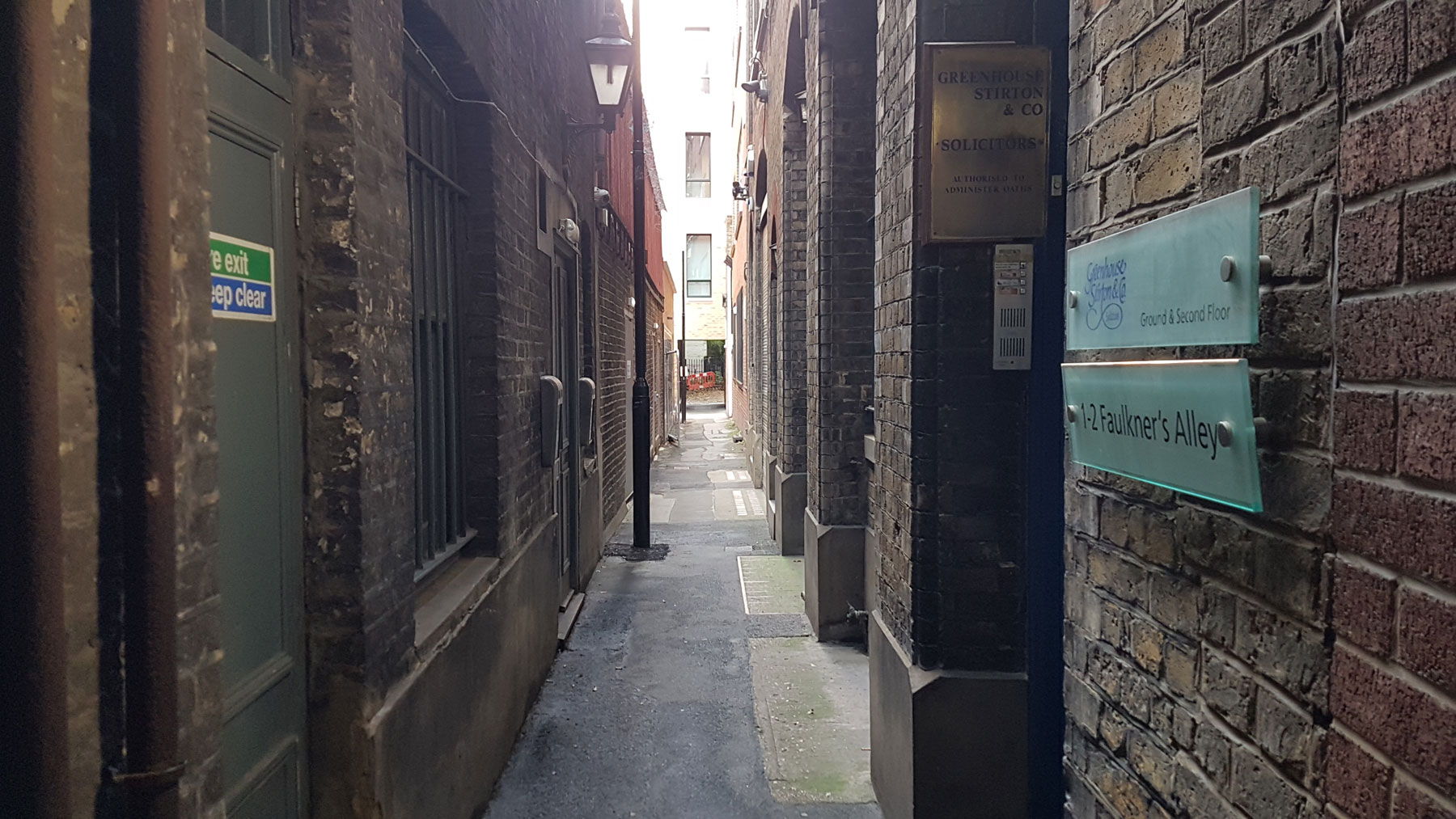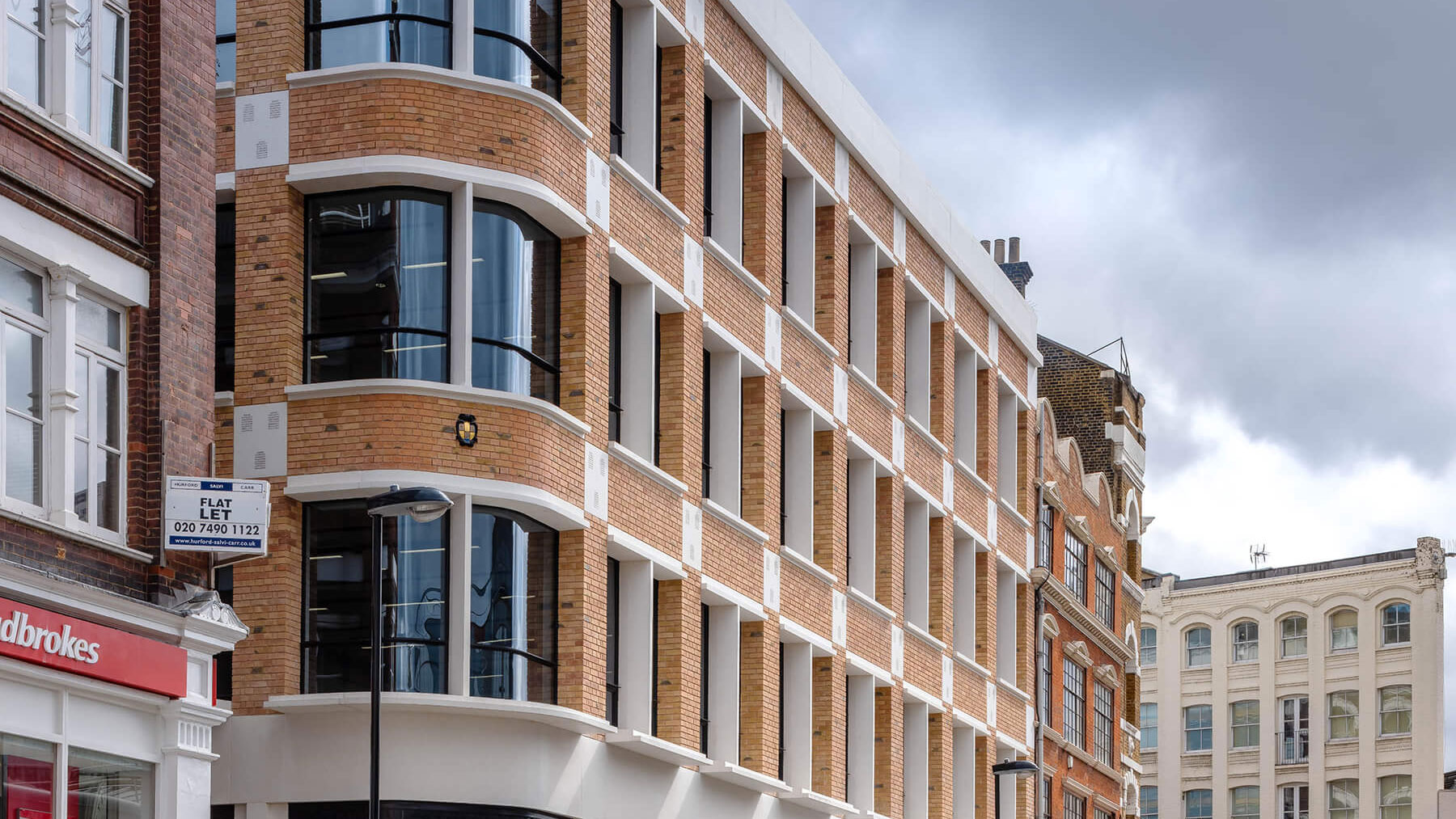This is an alley that many people pass walking to and from Farringdon station with an alluringly ornate ironwork grill and gate.
Faulkner’s Alley is a slip of a passage off Cowcross Street, and is a remaining remnant of a once much longer alley that ran from Cowcross Street where it starts today and was around twice as long as now.
This part of London sits within the boundaries of the Hospitaller Priory of St John of Jerusalem, but following the dissolution of the monasteries, the area was sold off and developed but became known for crime and prostitution. This ill reputation was not helped by the area sitting within the Liberty of the Fleet, where Fleet Prison debtors could take lodgings.
The alley seems to date from the early developments in the area, mainly as a back entrance to the buildings that front onto Turnmill Street. In the 1850s Pinks described wooden-fronted buildings in Faulkner’s Alley. Although none of the original building survive, the alley has managed to cling on.
Longer than it is today though, it seems to have started to be cut back in the early 19th century as the northern half was developed for factories and warehouses, and by the middle of the century, it had attained the length it has retained to this day.
The entrance looked different in the 1930s, and did not appear to have the ornate looking meta gate it has today, which seems to have been added maybe in the 1980s, as it isn’t there in 1976.
Passing through, it’s a narrow covered alley — with a wooden ceiling — and then to a passageway lined with a mix of Victorian and modern buildings, in places very picturesque.
The entire northern end of the alley has been owned by the Worshipful Company of Girdlers since the 17th century, and was for a long time occupied by the Red Lion pub on the west, and a warehouse on the east, but both were demolished in the 1960s for offices, and more recently, rebuilt as residential flats.
The Girdlers still own the site, and if you look up on the corner facing onto Turnmill Street, you will see their coat of arms on the building. There’s also a hint in the brickwork decoration of a symbol from their coat of arms – a griddle held by St Lawrence who was martyred upon one over hot coals.
What I have been utterly unable to find out though, is why it’s called Faulkner’s Alley. Whoever Faulkner was, he remains elusive.












Another wonderful view of London, Ian.
Perhaps the name “describes a person involved in falconry” ?
Hi Ian. My cousin worked in offices near here in the 80s and 90s and it was known as ‘pissing alley’! Not pleasant!
Something to do with a nearby club, as was, perhaps?
Turnmills. Those were the days.
Thanks for posting this; In doing some family tree research, I have discovered that a great great grandfather (Wilmot/Wilmott) lived there for a while around 1867, although he hailed from Bethnal Green and settled in another ‘difficult’ area in Islington. I must have walked past it many times and never noticed it! Any further colour would be welcomed.